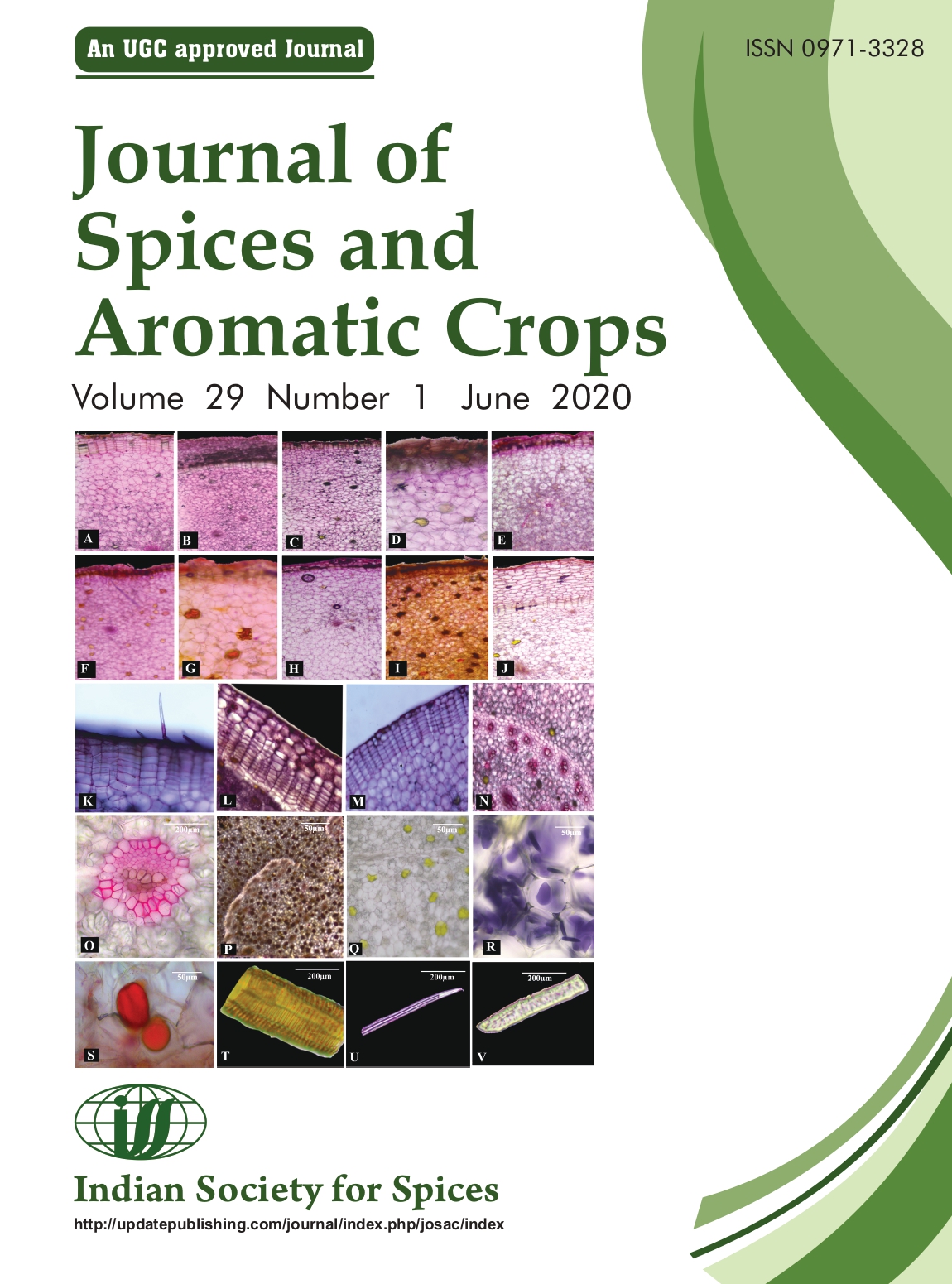Occurrence of teleomorphic phase of Colletotrichum gloeosporioides sensu lato, the incitant of black pepper anthracnose
DOI:
https://doi.org/10.25081/josac.2020.v29.i1.6334Keywords:
Anthracnose, Colletotrichum gloeosporioides sensu lato, Piper nigrum, peritheciaAbstract
Anthracnose caused by Colletotrichum gloeosporioides sensu lato, the ascomycetous pathogen is a major constraint in black pepper cultivation. In the present study, surveys carried out in black pepper cultivating regions of Karnataka, India revealed the prevalence of anthracnose disease manifested as diverse array of foliar symptoms. An atypical foliar symptom was also noticed in the black pepper nurseries, characterized by grayish necrotic lesions with brown-blackish margins and randomly distributed blackish structures of pin-head size in the lesion area manifested particularly on the older leaves. The pin-head structures produced orangish exudation embedded with asci, ascospores and perithecia, when incubated under high humid conditions. Typical anthracnose symptoms were developed on susceptible host in pathogenicity studies and subsequent isolation yielded two distinct colonies designated as black and orange. The perithecia were induced artificially under in vitro conditions, which retained fertility and infectivity more than three months. Alternation of generation was observed when the perithecia were cultured on potato dextrose medium which resulted in the formation of acervuli with abundant conidiation. The results of present investigation shed light into the occurrence and potential role of perithecial (teleomorphic) phase in the survival of C. gloeosporioides s. l. infecting black pepper.






 .
.